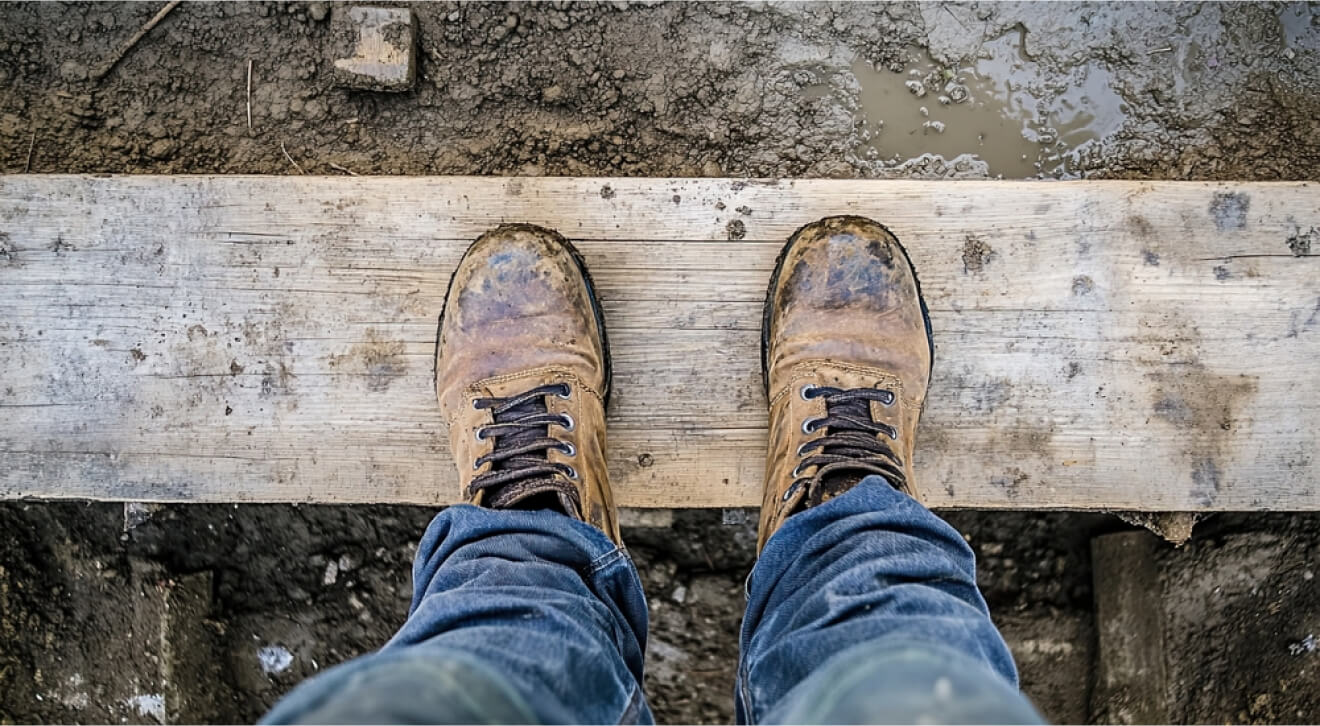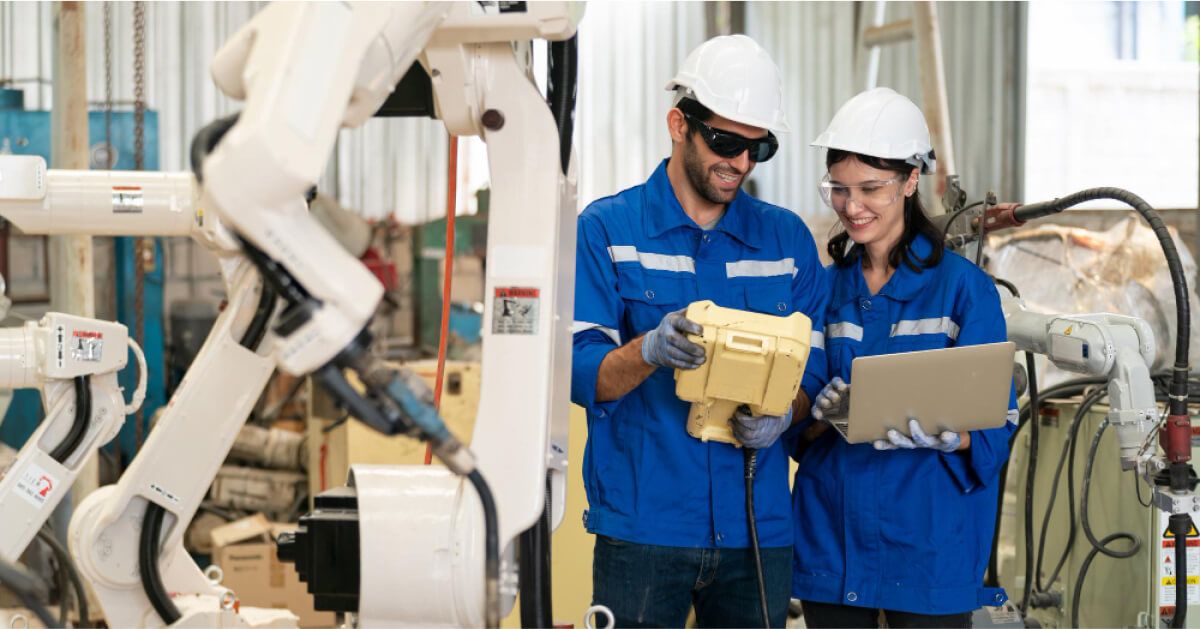Blue collar meaning: Job types, challenges, and workforce engagement tips

Remember when your dad’s hands were covered in grease fixing the old scooter on a Sunday morning, and you stood beside him, passing tools you didn’t even know the names of? There was something grounding about it—the rhythm, the craft, the quiet focus of making something work with your own hands.
That scene? That’s where the term blue collar meaning finds its roots—in skill-based, hands-on roles that keep everyday life running smoothly.
Over time, blue collar work has evolved beyond factories and repair shops, spanning dozens of types of blue collar workers across industries. Yet, many still use it without truly grasping what it stands for. So let’s take a closer look at who blue collar workers are today, and how this workforce continues to shape the way the world functions.
- Blue collar jobs involve skilled or manual labor in industries like construction and manufacturing, forming the backbone of the economy.
- The blue-white collar divide is blurring with technology, hybrid roles, and shared workplace values.
- Workers face instability, safety risks, limited growth, and unfair stereotypes.
- These jobs drive productivity, infrastructure, and economic growth.
- Engagement, training, safety, and inclusion improve morale, retention, and satisfaction.
What is blue collar and who are blue collar workers?
Blue collar jobs involve manual labor, often requiring physical effort rather than office-based tasks. Found in industries like construction, manufacturing, transportation, and maintenance, these roles are essential to the economy. The term “blue collar” originated from workers wearing durable blue uniforms suitable for tough tasks, distinguishing them from white collar office workers.
Blue collar work can range from unskilled roles to highly specialized trades like plumbing, electrical work, or welding, which often require formal training or apprenticeships. These jobs are typically hands-on and physically demanding, requiring endurance and practical expertise.
Unlike white collar roles focused on administration or intellectual tasks, blue collar positions emphasize operational execution. While traditionally linked with uniforms like work boots and overalls, the term goes beyond attire. It reflects a broad spectrum of professions that keep industries running. Despite differences in job type, perception, and pay scales, both blue and white collar workers play a vital role.
As we understand the blue collar employee definition and the real blue collar labor meaning, it’s helpful to explore how job colors emerged to group modern blue collar roles, vocational jobs meaning, and broader blue collar job categories.
Understanding the color classification

Ever noticed how crayons come in hundreds of shades, but we still call them “red” or “blue”? Work is similar and labels like blue collar or white collar don’t always capture the real picture. Simply put, it all comes down to how different roles contribute to the bigger system of work.
- Blue collar: These jobs involve manual labor and require specialized skills or on-the-job training. Blue collar examples of jobs are manufacturers, construction, maintenance, and transportation workers who handle physically demanding tasks.
- White collar: These roles occur in an office environment overseeing managerial, administrative, or analytical work. White collar workers often have higher educational requirements and wear white shirts or formal attire in office settings. Jobs in finance, law, and tech are common examples.
- Gray collar: A mix between blue collar jobs and white collar roles, these positions require a blend of technical skills and knowledge-based expertise. Gray collar roles include healthcare workers, technicians, and engineers.
- Pink collar: This classification is more about the type of service-oriented work rather than gender. Traditionally used to describe roles occupied mostly by women, such as teaching, nursing, or administrative work.
- Green collar: Emerging with the rise of sustainability-focused careers, these jobs focus on environmental conservation, renewable energy, and eco-friendly industries.
Once we see how color labels shape the meaning of blue collar in business context, the next step is comparing day-to-day realities, how manual labor meaning, expectations, and blue collar responsibilities differ from white-collar roles yet increasingly intersect.
How blue collar and white collar jobs differ and connect in 2026
Think of it like two gears in the same machine — each moves differently, but both keep things running. Simply put, blue collar workers and white collar employees now share more overlap than ever, with technology reshaping types of blue collar jobs and redefining how industries collaborate.
As the lines blur across blue collar vs grey collar and hybrid roles, it becomes essential to zoom into the core blue collar job characteristics that define work identity, skill expectations, and evolving blue collar employment trends.
Is the blue collar vs white collar divide still relevant today?
Each year, the old job divide gets blurrier. Blue collar work, once seen as separate, now overlaps with white collar roles — proving how much the blue collar industry and workforce have evolved together.
- Hybrid skillsets: Many roles now combine physical labor with technical expertise, creating positions that don’t fit neatly into either category.
- Shared technology adoption: Both blue collar workers and white collar employees increasingly rely on digital tools, automation, and data analytics to perform their jobs effectively.
- Converging workplace cultures: Collaboration, inclusion, and a focus on employee engagement strategies are becoming universal, breaking down the old blue collar culture vs office culture divide.
- Flexible career paths: Employees in both segments now expect clear advancement opportunities, recognition, and a focus on workplace morale, showing common aspirations.
- New classifications emerging: Gray collar, green collar, and pink collar categories reflect a more nuanced understanding of modern work beyond the binary.
- Gig economy influence: Both blue collared workers and office professionals are participating in freelance and gig work, further blurring distinctions.
- Common challenges: Issues like retention, skill development, and adapting to automation impact both groups, making the old divide less meaningful.
- Cultural recognition: Employers are increasingly aware that each workforce segment contributes uniquely, fostering a more unified appreciation for diverse roles.
With the divide shifting, understanding the foundational blue collar skill requirements helps clarify what makes these roles unique, and why these skills still anchor the blue collar workforce across industries and economic cycles.
What are the key characteristics of blue collar jobs?

Picture a city running like clockwork — trains moving, lights glowing, buildings rising. The quick truth most people overlook is that blue collar jobs and blue collar workers keep the blue collar industry alive through skill, precision, and everyday reliability.
Blue collar jobs involve manual labor, technical skills, and hands-on tasks in industries like construction and manufacturing.
They require endurance, training, or certifications, and are vital to infrastructure, offering stable careers, growth opportunities, and demanding safety, precision, and teamwork.
- Involve manual labor: These jobs require workers to perform manual labor, often using tools, heavy machinery, or specialized equipment. Tasks can range from operating factory machines to handling electrical work or carpentry.
- Require physical work: Many blue collar workers engage in tasks that demand physical endurance, such as lifting, assembling, repairing, or constructing. Unlike office work, these roles involve being on-site, often in challenging environments.
- Skilled and unskilled labor: Some jobs demand specialized skills and technical training before having work scheduled with the company's dispatch software, such as skilled trades like welding, plumbing, and HVAC repair. Others may rely on unskilled labor, where training happens on the job, as seen in certain factory jobs or general maintenance roles.
- Diverse work environments: Blue collar work isn't limited to a single setting. Workers may be found in factories, construction sites, transportation hubs, or repair shops. These environments contrast with office settings, where white collar professionals primarily work at desks.
- Educational requirements vary: While some roles demand certifications or apprenticeships, others have minimal educational requirements and prioritize hands-on experience and training over formal degrees.
- Distinctive work clothes: Historically, these workers wore blue work clothes like blue shirts, denim, and overalls, designed for durability and protection. Unlike white collar workers, who often wear formal attire, blue collar staff dress for practicality and safety.
- Stable demand across industries: Many blue collar jobs remain in high demand due to their essential nature. From construction workers to factory workers, these roles are critical to the economy and infrastructure.
Now that the essentials of manual labor meaning and skilled trades meaning are clear, it’s time to explore how safety, precision, and training shape the realities of work across varied blue collar occupations and industries.
Why do skills and safety matter most in blue collar work?

Think of a factory like a living engine where every bolt, belt, and spark depends on precision. Simply put, blue collar workers power the blue collar industry through skill, care, and constant focus on safety across all blue collar jobs.
- Specialized skills drive efficiency: Many blue collar jobs require extensive training and technical skills, such as electrical work, welding, or skilled trades like carpentry and plumbing. Workers undergo certifications, apprenticeships, or hands-on training to master their trade.
- Unskilled labor still requires adaptability: While some roles require minimal educational requirements, even unskilled labor positions benefit from on-the-job learning and experience. Workers develop problem-solving abilities, machine operation skills, and workplace adaptability over time.
- Physically demanding work increases risks: Unlike office work, where risks are minimal, blue collar workers frequently face job hazards. From working at heights in construction to operating heavy machinery in factories, every task involves potential risks.
(Source: Pew Research Center)
- Workplace safety is a priority: To protect workers, industries enforce strict safety guidelines, protective gear, and emergency protocols. Many blue collar workers wore safety equipment like helmets, gloves, steel-toe boots, and high-visibility vests to minimize risks.
- Training reduces workplace accidents: Proper training ensures workers can handle equipment, hazardous materials, and high-risk tasks safely. Safety drills, certification programs, and compliance checks help create a secure workforce.
- Uniforms enhance safety and professionalism: Unlike white collar workers, who typically wear suits or formal attire, blue collar staff wear industry-specific work clothes, such as blue shirts, coveralls, and protective gear designed for durability and safety.
- Different industries, different safety concerns: While factory workers focus on machine safety, construction workers follow guidelines for fall prevention, and those in maintenance handle electrical hazards. The type of blue collar work dictates the level of risk and safety measures required.
Once we understand why skill and safety matter, the next step is to examine which roles actually bring these expectations to life, through the most common, high-impact jobs that define blue collar career paths today.
What are the most common examples of blue collar jobs?

While offices wake to meetings, workshops wake to movement. Across countless blue collar jobs, blue collar workers and the blue collar workforce shape the blue collar industry — from factory workers to skilled trades professionals and every role that keeps the world running.
- Construction workers: These professionals handle physically demanding tasks such as building homes, roads, and commercial structures. They often specialize in roles like masonry, roofing, or welding.
- Factory workers: Employed in manufacturing, these workers operate machinery, assemble products, or oversee quality control in factories and industrial plants. Factory jobs can involve repetitive tasks but are essential for production.
- Electrical work: Electricians install, maintain, and repair electrical systems in homes, businesses, and industrial settings. This blue collar work requires licensing, technical skills, and safety training.
- Skilled trades professionals: This includes mechanics, plumbers, and HVAC technicians who repair and maintain systems essential for daily life. These roles require certifications and hands-on training.
- Transportation and logistics: Truck drivers, delivery personnel, and railway operators ensure the smooth movement of goods and people. This sector relies on practical driving skills and industry knowledge.
- Maintenance staff: From janitors to repair technicians, maintenance professionals keep buildings, equipment, and facilities in working condition. They often handle plumbing, electrical, and general repairs.
- Mining and oilfield workers: These jobs that are blue collar are crucial for resource extraction and energy production, involving extreme conditions and intensive manual labor.
- Agricultural laborers: Farming and livestock management involve planting, harvesting, and caring for animals, making it a labor-intensive industry.
Seeing specific job categories shows how wide the field is, but to truly support the blue collar workforce, we must understand how engagement, recognition, and development shape everyday motivation in modern blue collar roles.
Employee engagement strategies for blue collar workers
When job satisfaction, retention, and workplace morale rise, so does the spirit of the entire workforce. For blue collar workers, thoughtful engagement strategies show they’re more than just hands on a job — they’re valued contributors to a thriving culture.
Engaging blue-collar workers needs strategies tailored to their unique challenges.
Communication, recognition, fair pay, and safety build trust and morale. Inclusion, training, and feedback help keep them motivated, satisfied, and aligned with organizational goals.
- Provide training and career development: Offering continuous training in technical skills and leadership helps blue collar workers advance in their careers. Investing in skill-building programs for skilled trades, maintenance, and electrical work boosts employee confidence.
- Improve workplace safety and conditions: Ensuring safe work environments, especially in physically demanding roles, shows that employers value their workforce. Clear safety protocols in factories, construction sites, and transportation hubs enhance trust and well-being.
- Recognize and reward performance: Unlike white collar professionals, many blue collar workers don’t receive regular performance incentives. Recognition through bonuses, promotions, or awards improves motivation in roles like factory jobs, manufacturing, and blue collar occupations.
- Enhance work-life balance: Many blue collar jobs require long hours or shift work. Offering flexible schedules, paid leave, and mental health resources creates a more balanced, engaged workforce.
- Improve communication and feedback channels: Encouraging open dialogue between management and blue collar workers helps address concerns, boosts morale, and fosters a sense of inclusion. Unlike in an office environment, where meetings are frequent, these workers need structured ways to share feedback.
With engagement strategies established, we can look at how the overall work landscape is shifting, especially as technology, automation, and new blue collar employment trends redefine expectations for work, skill, and career growth.
How are blue collar jobs evolving in the modern economy?
Picture the economy as a living network where every link must adapt to stay strong. The reality is, blue-collar occupations, and other blue collar roles now drive the blue collar economy, shaping blue collar careers and blue collar professions for the future.
- Diverse opportunities: Blue collar workers today have access to a wider blue collar jobs list, including advanced manufacturing, renewable energy, skilled trades, and logistics — expanding beyond traditional definitions of blue collar work.
- Technology integration: Many blue collar occupations now require familiarity with automation, software, and high-tech tools, blending physical work with digital skills to stay competitive in the market.
- Increased representation: Companies are enhancing blue collar culture initiatives and improving hiring practices to better support and include blue collar jobs for women, promoting diversity in previously male-dominated fields.
- Competitive compensation: As demand grows, blue collar salary levels in certain industries are rising, making blue collar workers a more sought-after and valued part of the workforce.
- New business models: The rise of gig work and platforms supporting blue collar business fund programs allows independent blue collared workers to build careers with flexibility and financial backing.
- Focus on sustainability: The modern blue collar workforce is increasingly engaged in green collar roles that support renewable energy, eco-friendly manufacturing, and sustainable infrastructure development, aligning economic growth with environmental responsibility.
As the economy transforms, it’s equally important to break the outdated assumptions holding workers back, so we can separate myths from the real blue collar lifestyle meaning, value, and opportunities shaping the future.
What people often get wrong about blue collar work
It’s like judging a book by its cover, people see the surface, not the story inside. In reality, blue-collar workers, blue collar staff, and blue collar employees keep the blue collar industry running every day. From diverse blue collar occupations to evolving roles, this workforce is redefining what modern blue collared life looks like, far beyond stereotypes tied to the origin of the term blue collar or outdated ideas about blue collar men in traditional trades.
- Blue collar jobs don’t pay well:” Many roles offer competitive wages, often surpassing certain entry-level white-collar salaries, especially in skilled trades and high-demand sectors that rely heavily on the blue collar industry.
- “Blue collar work lacks career growth:” Today’s blue-collar workers can advance through apprenticeships, certifications, and supervisory paths, a progression often supported by training programs and occasionally strengthened by blue collar union representation.
- “It’s only for men:” This myth is fading fast. The rise of blue collar jobs for women has reshaped the workforce, proving the blue collared landscape is more diverse than ever.
- “These jobs are unskilled:” Most roles demand technical expertise, problem-solving, and hands-on mastery, built through rigorous training and experience, core traits that define the modern blue collar industry.
- “Blue collar jobs are disappearing:” Automation is changing tasks, not eliminating work. Demand remains strong in construction, renewable energy, logistics, and infrastructure, bolstered by new programs and evolving blue collar union priorities.
- “Blue collar work is monotonous:” Many positions are dynamic, requiring adaptability, creativity, and collaboration across diverse teams, qualities that align with fast-changing operational needs.
- “Only certain industries offer blue collar jobs:” Beyond construction and manufacturing, blue collar opportunities exist in logistics, healthcare support, renewable energy, and even emerging green-collar and pink-collar roles, proving the blue collar industry is broader and more innovative than people assume.
Now that the misconceptions are out of the way, let’s move from perception to reality, by looking at where blue collar workers actually operate and how environments shape daily blue collar responsibilities and expectations.
What the work environment looks like for blue collar workers
Imagine stepping into a world built on motion with sparks flying, engines humming, and people moving with purpose. The truth is, blue collar workers shape every essential system around us. From the definition of blue collar roles to how blue collar jobs meaning shows up daily, these hands-on professionals power the rhythm of modern blue collar industries, proving that the real heartbeat of work often starts far from office desks.
- Factories and manufacturing plants: Many blue collar jobs exist here, where workers operate heavy machinery, assemble products, and manage logistics. These settings reflect key characteristics of blue collar jobs—precision, structure, and safety, while showcasing classic blue collar worker job examples found in global production.
- Construction sites: These environments illustrate classic types of blue collar jobs, where construction workers build homes, bridges, and city infrastructure. This is often where people first understand blue collar meaning in its raw, skill-driven form.
- Transportation hubs: Truck drivers, dock operators, and railway staff keep goods moving. These roles are strong examples of blue collar jobs, essential in logistics-heavy blue collar industries that depend on physical expertise and time-sensitive coordination.
- Workshops and repair centers: Mechanics, electricians, and technicians represent the traditional image many people associate with the Blue collar Man meaning, hands-on, technical, and highly skilled. These trades remain core to every blue collar occupation.
- Outdoor labor settings: Agricultural laborers, landscapers, and utility crews reflect diverse blue collar hiring needs. They work in weather-exposed conditions but provide indispensable services that people rely on every day.
- Mining and oil fields: These demanding environments require strict safety protocols and highlight the most intense types of blue collar jobs, often associated with physical resilience and specialized training.
- Government and public service sectors: Blue collar workers maintain city infrastructure, waste management, sanitation, electrical grids, and road repairs. These roles expand the blue collar jobs meaning beyond private industries into essential public service.
Understanding these environments makes it clear why blue collar labor is economic infrastructure, so the next step is exploring how these hands-on roles power national growth, productivity, and long-term blue collar career paths.
How blue collar workers power the global economy
Picture an engine running under every city—unseen but unstoppable. The reality is, blue collar labor fuels the blue collar careers through the work of blue collar professions, blue collar roles, and blue-collar employees who keep every blue collar sector in motion.
Blue collar workers drive economies by building infrastructure, producing goods, moving supplies, and maintaining essential services.
Their hands-on labor fuels industrial growth, urban development, and national resilience far beyond boardrooms, making them indispensable to economic stability and progress.
- Manufacturing and production: Factory workers play a crucial role in assembling products, operating machinery, and maintaining supply chains. This sector contributes significantly to national and global trade.
- Construction and infrastructure: Construction workers build roads, bridges, and buildings, shaping cities and enhancing economic growth. Their work enables business expansion and urban development.
- Transportation and logistics: Truck drivers, railway operators, and dock workers ensure the smooth movement of goods, keeping supply chains functional. The economy relies heavily on this sector for efficiency.
- Public services and government jobs: Sanitation workers, city maintenance staff, and utility service providers contribute to public health and safety, maintaining city operations and essential services.
If automation is rising, how are blue collar careers still growing?
It’s easy to assume that machines are taking over, but the reality paints a different picture. Automation is reshaping blue collar careers, not replacing them. Across the blue collar sector, new technology is creating higher-skill, better-paying opportunities that need human expertise to run, repair, and refine.
According to the U.S. Bureau of Labor Statistics (2025), jobs like wind turbine service technicians and solar photovoltaic installers, blue collar workers in this case, are expected to grow by over 40–50% by 2034, ranking among the fastest-growing occupations in the country.
This proves that the blue collar workforce remains central to progress — evolving into roles that merge manual skill with technical know-how. In short, automation isn’t replacing blue collar workers; it’s redefining what their expertise means in a modern, tech-driven economy.
The role of technology and automation in blue collar industries

Picture a craftsman handed a smart tool but the skill stays, but the pace multiplies. In today’s world, blue collar occupations and blue collar careers are powered by automation, pushing the blue collar industry toward faster, safer, and more efficient ways to work.
- Manufacturing advancements: In factories, automated machinery now assists factory workers with assembling, packaging, and quality control, improving precision and reducing human error.
- Construction technology: Construction workers use advanced tools like 3D printing, automated bricklaying machines, and drones to enhance project efficiency and safety.
- Transportation automation: The logistics industry leverages GPS tracking, AI-powered route optimization, and self-driving vehicle innovations, revolutionizing transportation and delivery services.
- Skilled trades and maintenance: AI-driven diagnostics, robotic assistants, and smart equipment help blue collar workers in electrical work, maintenance, and plumbing, increasing accuracy and reducing downtime.
- Workplace safety improvements: Wearable technology, exoskeletons, and smart helmets help prevent injuries in physically demanding work environments.
As technology reshapes roles, the next question is what actually keeps workers satisfied, how blue collar pay meaning, workplace conditions, and respect shape long-term retention and motivation.
What drives job satisfaction in blue collar roles?
Think of a workshop where every tool is cared for and each one performs better because it’s valued. That’s exactly how blue collar staff and blue collar workers feel when fair blue collar salary, growth, and define blue collar in today’s blue collar industry.
- Competitive pay: A fair and transparent blue collar salary remains one of the most important factors influencing job satisfaction and loyalty among blue collar staff.
- Safe work environments: Workplace safety is non-negotiable. Ensuring that blue collar workers can perform their jobs without undue risk builds trust and morale.
- Career advancement opportunities: Providing clear paths to grow, through training, apprenticeships, and promotions, keeps blue collar workers motivated and reduces turnover.
- Recognition and respect: Valuing the contributions of blue collared workers through recognition programs and open communication fosters a positive blue collar culture.
- Work-life balance: Supporting employees with manageable schedules and resources to reduce physical and mental strain helps maintain satisfaction and long-term engagement.
Once we see what motivates workers, it’s easier to understand the roadblocks they face, especially when blue collar vs skilled trade expectations collide with real-world challenges in demanding environments.
What challenges do blue collar workers face in today’s economy?
It’s like running a marathon on uneven ground where every step takes extra effort. Simply put, blue collar workers, blue collar staff, and blue collar employees keep the blue-collar careers moving despite the tough blue collar roles they navigate daily.
- Job instability and wage concerns: Many blue collar jobs offer hourly wages, leading to income fluctuations. Unlike salaried white collar jobs, overtime and seasonal work can impact financial stability.
- Physically demanding work: Unlike office work, which is more sedentary, blue collar work requires endurance, making injuries and long-term health issues common, especially in fields like construction and manufacturing.
- Lack of career growth opportunities: While some roles require specialized skills and certifications, many blue collar workers struggle with limited advancement opportunities compared to white collar professionals in corporate structures.
- Workplace safety risks: Jobs that involve manual labor—such as electrical work, maintenance, and transportation—pose risks from machinery, hazardous materials, and extreme conditions. Strict safety regulations and proper training are essential.
- Automation and technology changes: With industries evolving, some blue collar staff worry about automation replacing traditional roles. While technology improves efficiency, it also requires workers to adapt and acquire new technical skills.
- Stigma and societal perceptions: Many still view blue collar workers as less skilled than white collar workers, despite the expertise required in trades like plumbing, welding, and factory jobs. This perception can discourage younger generations from pursuing blue collar occupations.
And as challenges rise, inclusion becomes essential, so we explore how DEI strengthens the blue collar workforce by improving fairness, safety, and upward mobility in modern blue collar roles.
How does diversity, equity, and inclusion (DEI) apply to blue collar workforces?
Picture a busy construction site where different people, accents, and skills all come together to build something bigger than themselves. Here’s the short version before we unpack it, diversity, equity, and inclusion in blue collar work isn’t about slogans. It's about fairness, respect, and opportunity where it matters most.
- Workforce diversity: Blue collar workers today come from all walks of life, with more women and underrepresented groups joining industries like manufacturing, transportation, and construction.
- Fair pay and equity: Pay gaps still exist across the blue collar workforce. Clear wage policies, equal pay, and transparent training paths help level the field.
- Inclusive environments: Every blue collar employee deserves a safe, bias-free workplace — whether on a factory floor or in maintenance teams.
- Growth access: Many blue collar employees miss leadership chances. Mentorship, apprenticeships, and fair training open doors to progress.
- Respect for skills: Recognizing the value of blue collar roles ensures every worker feels seen, valued, and proud of their craft.
With culture and fairness covered, the next step is seeing how unions reinforce protection, shaping rights, job security, benefits, and stability across all blue collar job categories.
The role of labor unions in protecting blue collar workers
For generations, labor unions have been the collective voice of blue collar workers — fighting for fair wages, job security, and safer working conditions. In industries where individual workers can feel powerless, unions provide the strength of solidarity and ensure that their contributions are recognized and their rights defended.
Here’s why unions remain a cornerstone of protection and progress in the world of blue collar work:
- Wage negotiations and job security: Labor unions fight for fair pay, overtime compensation, and consistent employment. They help reduce wage disparities between blue collar workers and white collar professionals.
- Improving workplace safety: Many blue collar occupations involve hazardous conditions in manufacturing, construction, and maintenance. Unions push for strict safety regulations, reducing workplace accidents and improving protective measures.
- Advocating for better benefits: Unlike many white collar jobs, some blue collar workers lack health insurance, retirement plans, or paid leave. Unions negotiate for comprehensive benefits, ensuring worker well-being.
- Providing legal representation: If disputes arise, labor unions offer legal support, ensuring fair treatment in cases of wrongful termination or workplace discrimination.
Once protection is clear, understanding workforce sentiment becomes critical, bringing pulse surveys into focus as tools that reveal blue collar employee definition, morale, and concerns with clarity.
Why pulse surveys matter for blue collar teams
Think of them as check-engine lights for your people where small signals prevent big problems. The reality is, pulse surveys help leaders understand their blue collar workforce, blue collared workers, and blue collar culture in real time, turning honest feedback into meaningful action.
- Real-time feedback collection: Unlike traditional annual surveys, pulse surveys provide continuous insights into job satisfaction, workplace safety, and overall morale in industries like manufacturing, construction, and maintenance.
- Addressing workplace concerns: Issues such as unsafe conditions, lack of training, or concerns about work clothes can be identified and resolved before they impact productivity.
- Enhancing workforce engagement: Pulse surveys help employers track blue collar worker engagement, ensuring recognition, fair wages, and balanced workloads in physically demanding roles.
- Improving communication: In contrast to office work, where employees have regular meetings, pulse surveys offer a structured way for blue collar staff to voice their opinions.
- Data-driven decision-making: Platforms such as CultureMonkey enable businesses to collect, analyze, and act on feedback, ensuring a proactive approach to workforce management.

15 Questions to measure safety & morale instanlty
Download nowWith listening established, it’s time to understand how insights lead to action, through systems that turn feedback into meaningful improvements across blue collar responsibilities and organizational culture.
How does CultureMonkey turn blue collar feedback into real action?
Imagine if every idea from the workshop floor or logistics crew led to an instant improvement — that’s what CultureMonkey helps make happen. At its core, the platform helps blue collar workers transform honest feedback into measurable actions using pulse surveys and data-driven insights.
- Listening module: Runs anonymous, mobile-friendly pulse surveys tailored for the blue collar workforce, even in factories or remote job sites.
- Analyze module: Uses AI dashboards to identify trends in engagement, morale, and satisfaction among blue collar employees and blue collar staff.
- Action module: Converts survey insights into step-by-step recommendations, ensuring no feedback from blue collar roles goes unheard.
- Grow module: Tracks the progress of engagement scores, helping blue collar professions and teams sustain improvements over time.
- Custom industry templates: Designed for all types of blue collar jobs in construction, manufacturing, and logistics, thus ensuring surveys feel relevant to daily work.
By connecting listening, analysis, and action, CultureMonkey helps every blue collar worker feel heard, valued, and part of a continuous improvement loop that drives real change.
Conclusion
Blue collar workers form the backbone of our economy — building infrastructure, maintaining essential services, and driving industrial progress. Yet their contributions often go unrecognized, and their voices unheard. Unlike their white collar counterparts, many blue collar employees lack structured communication channels, career development opportunities, and recognition programs that foster engagement and satisfaction.
Addressing this gap begins with intentional action. Investing in training, promoting inclusion, ensuring workplace safety, and implementing real-time feedback mechanisms are not merely best practices but essential components of a resilient workforce strategy.
Platforms such as CultureMonkey enable organizations to systematically capture and act on employee feedback, ensuring that blue collar workers receive the engagement and recognition they deserve. As industries continue to evolve, it is imperative that engagement is embedded as a core element of workforce management, rather than treated as an afterthought.
FAQs
1. What is a yellow collar job?
The term yellow collar job describes all the roles in creative, artistic, or media-based industries. These professionals work in design, entertainment, marketing, and content creation, blending creativity with technical skills. Unlike blue collar workers in factories or construction, they operate in flexible settings, sometimes between traditional office work and field-based roles, showcasing a distinct contrast in job functions.
2. What are pink collar jobs?
The term pink collar jobs traditionally refer to professions dominated by women, particularly in caregiving and service-oriented fields. Unlike blue collar occupations or white collar jobs, these roles focus on direct human interaction and soft skills. Jobs in nursing, teaching, and administrative support fall under this category, emphasizing emotional intelligence rather than physically demanding tasks or corporate-based work.
3. What are gold collar jobs?
The term gold collar jobs describes all the high-skilled professions requiring advanced education, expertise, and decision-making. These roles, often found in law, medicine, engineering, and specialized finance, require significant training and intellectual ability. Unlike blue collar jobs, they don’t typically require manual labor but demand extensive knowledge, setting them apart in the professional workforce landscape.
4. What is blue collar work?
Blue collar work refers to hands-on, skilled, or manual labor typically performed in industries like construction, manufacturing, transportation, and maintenance. It involves physical tasks, technical expertise, and on-the-job experience. Blue collar workers are essential to keeping infrastructure, production, and essential services running efficiently, often contributing directly to economic growth through their practical and dependable work.
5. What are the types of blue collar jobs?
Other examples of blue-collar jobs include glaziers, plasterers, loggers, pipeliners, ironworkers, blacksmiths, dockworkers, upholsterers, stonemasons, millwrights, machinists, roofers, welders, crane operators, and assemblers. These roles span industries like construction, forestry, shipping, and manufacturing, and requires a unique mix of physical skill, craftsmanship, and technical expertise that keeps essential services and infrastructure functioning efficiently.
6. Origin of the term blue collar
The term “blue collar” originated in the early 20th century when manual laborers wore durable blue denim or chambray shirts to hide stains from physical work. Over time, this uniform became symbolic of hands-on, skill-driven roles in manufacturing, construction, and other labor-intensive industries. Today, it represents a broad spectrum of essential workers who power the economy.
7. Is factory work blue-collar?
Yes, factory work is considered blue-collar because it involves manual labor, technical skills, machinery operation, and hands-on production tasks. Factory workers fall under traditional blue collar job categories, contributing to manufacturing, quality control, and supply chain movement. These roles often require specialized training, physical effort, and practical expertise that align with the core characteristics of blue collar labor.







